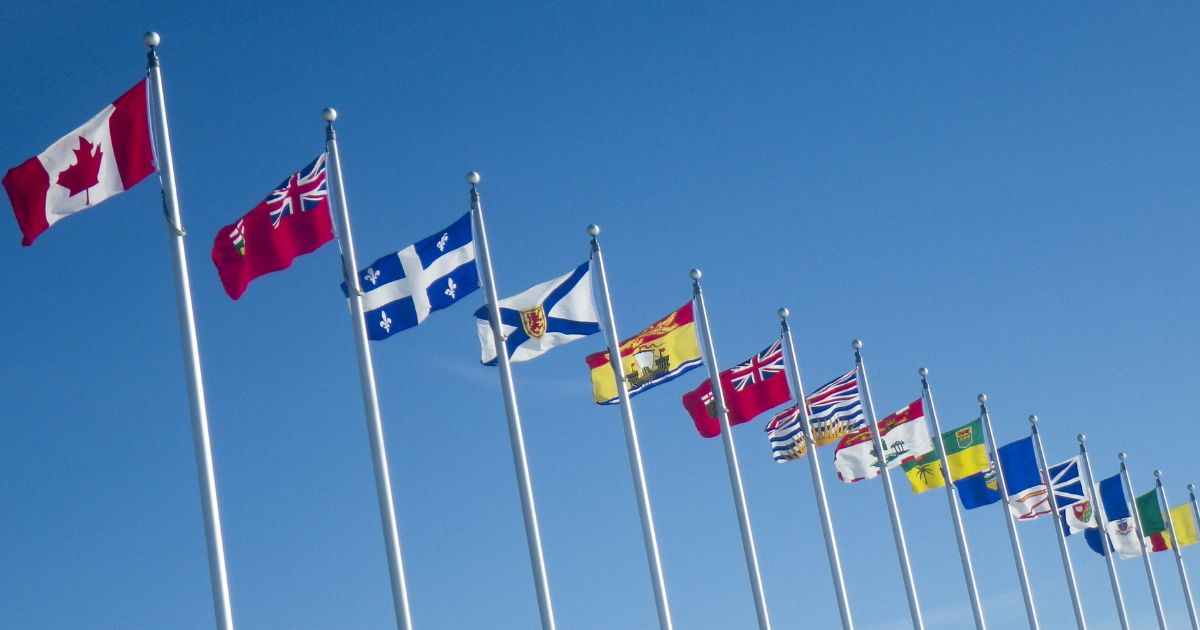Did you know Canada is the 2nd largest country in the world? So Canada doesn’t just have a flag that you are familiar with. Each province of Canada has a different representative flag. And read on to discover these special, meaningful stories of Canadian province flags!
1. History of Canada’s National Flag
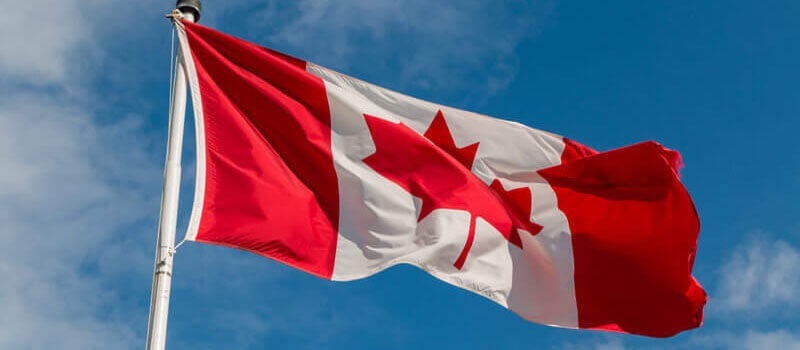
Long before Canada became a nation, European nation emblems were used to identify settlers and explorers. French emblems were used in New France, while British emblems were used throughout British North America.
- Unofficially, the Red Ensign is Canada’s flag since 1871. The Union Jack and it were Canada’s main flag until 1965.
- 1892: Canada adopts the Red Ensign. It’s an unofficial national flag on land.
- 1921: King George V gives Canada a new coat of arms, replacing the Red Ensign. The King makes red and white Canada’s official colors.
- 1925: Parliament soon abandoned plans to design a new Canadian flag.
- 1946: A second legislative committee to create a new flag failed. Mackenzie King canceled it. The Union Jack and Canadian Red Ensign are still national flags.
- The Canadian Red Ensign has had red leaves instead of green since 1957.
- Lester B. Pearson established a national flag in 1964 before the 1967 Centennial. The committee chose the current Canadian flag in 1964 after studying many ideas.
- 1965: Canada’s new flag is presented. The queen proclaimed on January 28. The new flag was raised on February 15.
- National Flag of Canada Day is February 15 to mark the inaugural raising of the flag.
Don’t miss 10 Things Canada Is Famous For
The meaning of maple leaf in Canada flags
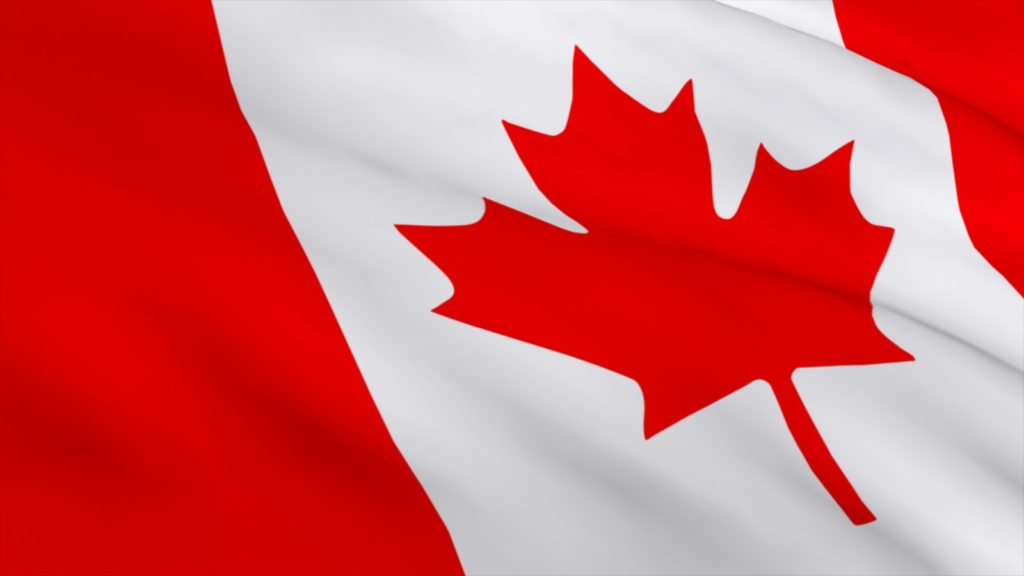
The Canadian National Flag consists of a large maple leaf on a white with two red bars on either side. It has a 1:2:1 ratio and an 11-point red maple leaf in the center. It is the first flag of Parliament and officially as the country’s official national flag by the Canadian monarch.
The maple leaf Canada flag symbolizes national unity because it is one of Canada’s most well-known national emblems. And red and white are the country’s official colors. Most government towers, schools and large businesses will have a Canadian flag. It is flying on a flagpole outside their entrance.
Besides, we quite common to see homeowners installing smaller flags outside their homes. Furthermore, many people will wear clothing with the Canadian flag, whether it’s a hat, t-shirt, or luggage tag. When someone important to Canada dies, the flag should be flown at half-mast or lowered halfway down the pole.
2. Canadian Province Flags
2.1. SASKATCHEWAN FLAG
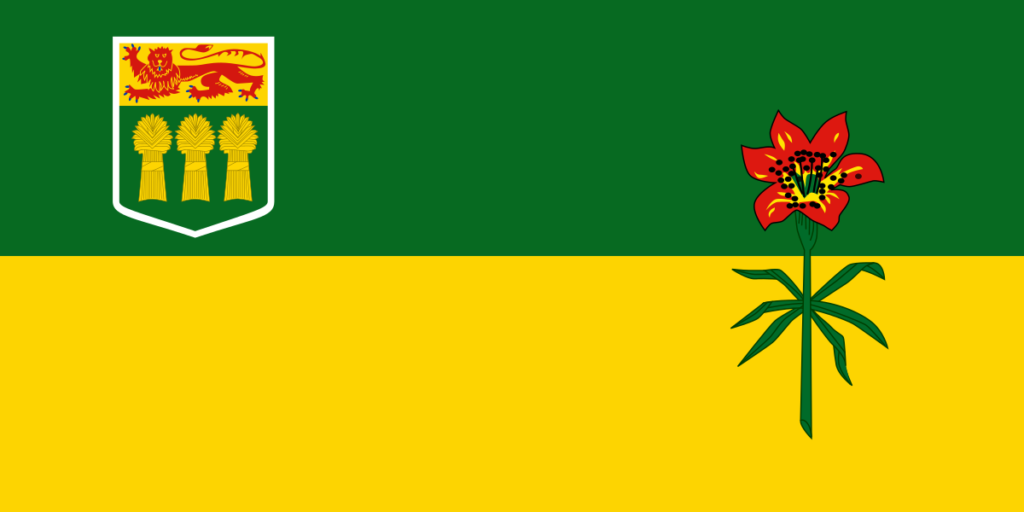
The colors yellow and green, which stand for the huge forests in the north and the southern grain fields, are the principal components of the Saskatchewan provincial flag in Canada, which was created as part of a province-wide competition in 1969. On the right side of the flag is the local flower, the Western red lily.
The lion passant or leopard, a regal emblem of England, is depicted on the provincial coat of arms shield in the upper left corner. The three gold wheat sheaves, often known as garbs, stand in for the province’s agricultural sector.
2.2. BRITISH COLUMBIA FLAG
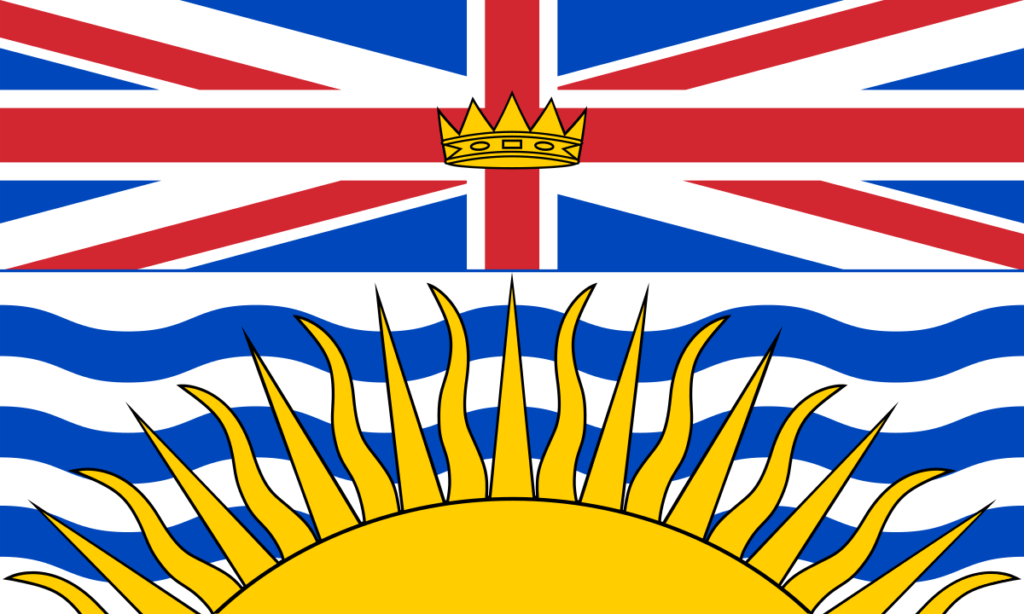
This Canadian province flag was designed in 1960 and is based on the shield of British Columbia’s provincial arms.
The top of the flag features a rendition of the Royal Union Flag with a crown in the center and a setting sun below, representing British Columbia‘s location at the western end of Canada. We’ve also heard it represents how “the sun never sets on the British Empire.”
2.3. ALBERTA FLAG
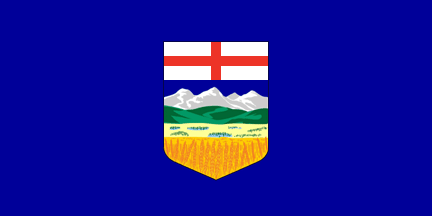
The shield bearing the Alberta coat of arms is displayed on a blue backdrop on the Canadian province flag, which was created in 1968.
The province shield features a white backdrop with a red St. George’s Cross, clear skies over snow-capped mountains, green hills, prairie land, a wheat field in the foreground, and a wheat field in the distance.
2.4. MANITOBA FLAG
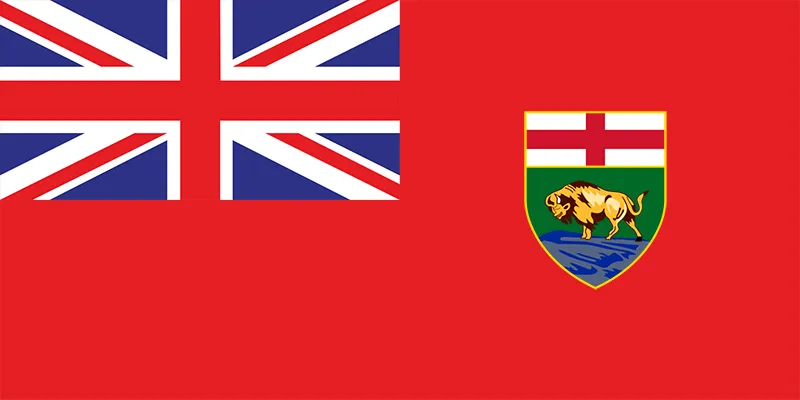
As you might expect, Manitoba and Ontario were the only two provinces that avoided the flag-redesigning craze that swept the rest of Canada in the 1960s. Both continue to use generic Red Ensigns with the British flag in the upper left corner and the province’s shield in the lower right.
2.5. QUEBEC FLAG
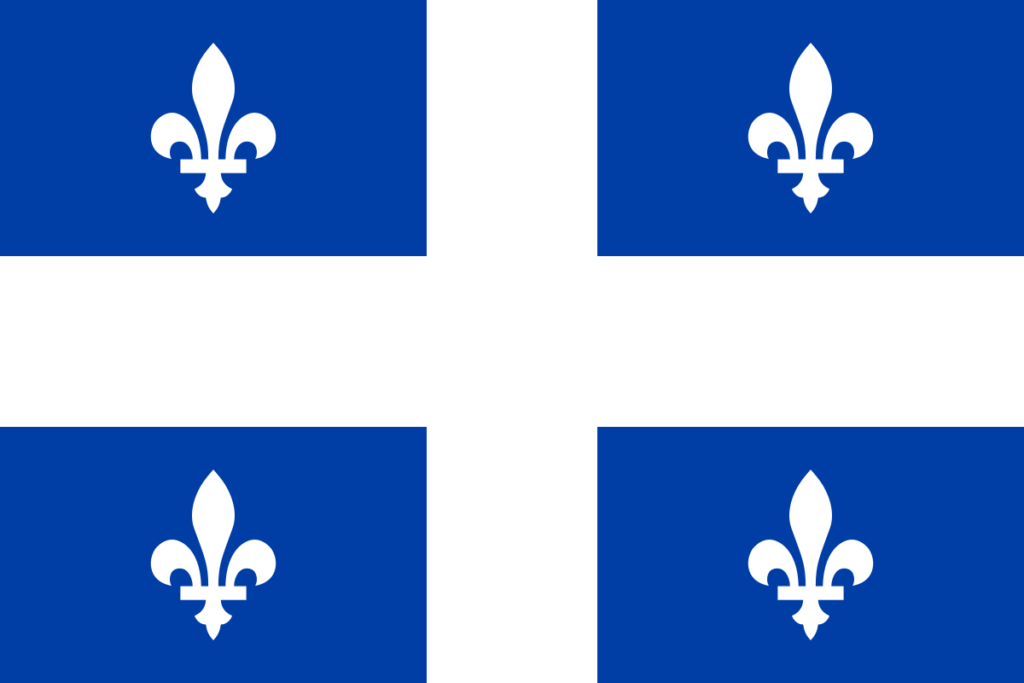
Quebec was the first province to create its distinctive provincial flag in Canada, which should be no surprise given their nationalistic sentiment. It’s a white cross with four white fleurs-de-lis on a blue background.
The fleur-de-lis was in the heraldry of many European countries, but it is most closely with France, particularly during its monarchical period. Both this and the cross are to evoke memories of royal France’s medieval banners.
2.6. YUKON FLAG
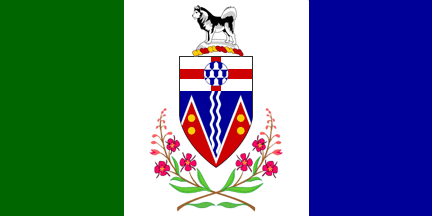
A contest winner designed the Yukon flag, and it became official in 1968. It is green, white, and blue, with the Yukon coat of arms in the center, surrounded by a wreath of fireweed, the territorial flower.
2.7. ONTARIO FLAG

Like Manitoba, Ontario displays the standard Red Ensign with the province shield on the right and the British flag in the upper left corner.
Three gold maple leaves on a green backdrop with the St. George’s cross at the top make up the shield of arms, symbolizing Upper Canada’s long-standing ties to Britain.
2.8. NORTHWEST TERRITORIES FLAG
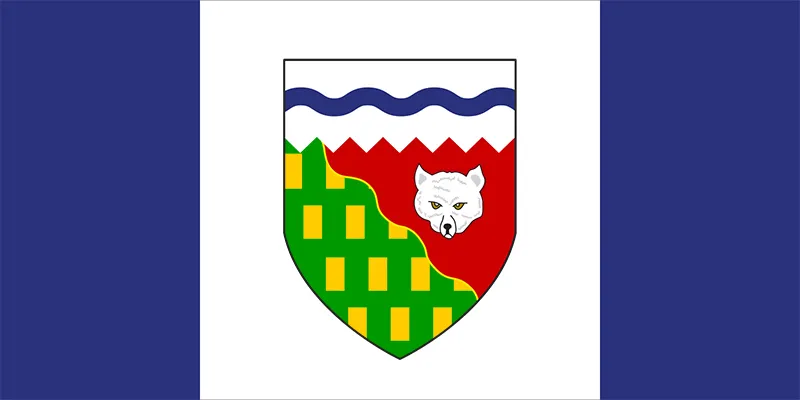
The Canadian province flag has two blue panels on each side, representing the numerous rivers and lakes. In the center is a white stripe that spans half the flag’s width and represents snow and ice. The shield from the Northwest Territories’ coat of arms is in the center.
2.9. NEWFOUNDLAND & LABRADOR FLAG
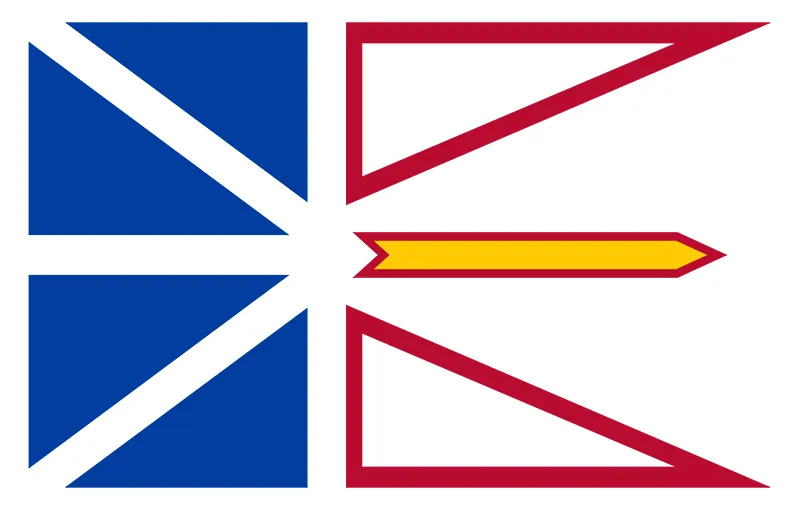
White and blue represent snow and ice, respectively, while blue symbolizes the waters of the sea, lakes, and rivers. The gold depicts the self-assurance of the people of Newfoundland and Labrador in their ability to succeed in the future, while the crimson stands for human endeavors.
A tribute to the Union Jack as a reminder of historical ties with the British Isles is included in the design of the Canadian province flag in addition to the colors and etchings found on Beothuk and Innu decorative pendants.
2. 10. NEW BRUNSWICK FLAG

The upper third of this Canadian province flag, adopted in 1965, is decorated with a golden lion passant on a red background. In the lower two-thirds, a gold field defiled with a sailing ship on top of blue and white wavy lines.
2.11. NUNAVUT FLAG
The Canadian province flag was created by a local artist and has a red inuksuk with a blue star in the upper right corner, dividing the gold and white fields vertically. The red color represents all of Canada, while the blue and gold colors stand for the “riches of land, sea, and sky,” respectively.
PRINCE EDWARD ISLAND FLAG
“The small beneath the protection of the mighty” is the translation of the province’s motto, Parva sub ingenti. The official colors of Canada, red and white, are displayed below that in alternating bands.
2.12. NOVA SCOTIA FLAG

The Canadian province flag for Nova Scotia, established in 1929, stands apart from the others because it has a blue saltire on a white background with the royal arms of Scotland defaced. It is a Scottish flag that has been reversed, with the Cross of St. Andrew and the regional coat of arms in the middle.
3. 13 Interesting Things About the Canadian flag
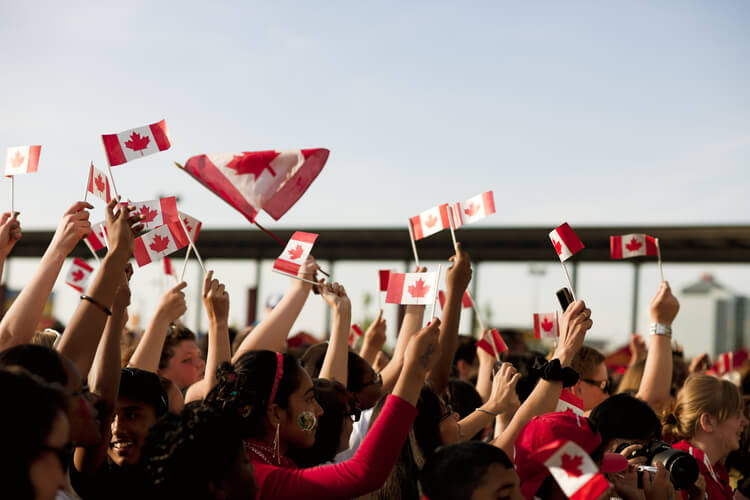
- Since the 18th century, the maple leaf has been a symbol of Canada.
- This was Lester B. Pearson’s preferred design for a new Canadian flag.
- Prime Minister Lester B. Pearson established a committee in 1964 to determine the official design of the Canadian flag.
- Red and white – Canada’s official colors in King George V’s proclamation of the Royal Arms of Canada in 1921.
- The length of the Canadian flag is twice as long as it is wide. There is no other national flag with those dimensions.
- Flags flown on Parliament Hill are free. However, the waiting list for one is 40 to 60 years long!
- The Canadian Red Ensign was the federal government’s previous Canadian flag before introducing the official maple-leaf design.
- The red and maple leaf were created by Dr. George Stanley, a professor at Kingston, Ontario’s Royal Military College.
- Elisabeth Hoffmann-Lamoureux, the owner of one of the original maple leaf flags that flew over Parliament on February 15, 1966, returned it to Canada in 2005.
- Before Stanley’s design was chosen, 5,000 flag designs were submitted and reviewed.
- The Royal Military College of Canada’s flag inspired the maple leaf design.
- The largest Canadian flag ever made measured 38 meters by 76 meters and cost $15,000 to construct.
